Another day, another project.
The pin on the van's 7-way connector that charges the trailer battery has never worked. I know exactly why, too, because I was there when the current brake controller was installed a few years ago: We couldn't find a convenient place to connect the wire. We also knew the van was probably getting traded in soon. Hah! Joke's on future me, past me!
Anyway, I sat down with the Ford body builder's handbook, which is never more than a quick google away, and has info on all sorts of neat electrical tricks built into this van's control modules, like stationary elevated idle control to run a power take off. I found something particularly interesting: shove any standard 40A relay into the spare spot in the fuse box (closest to the top of the photo), and the red wire in the bundle that ends on the driver's side of the firewall will magically be powered only when the van's ignition is on and the battery voltage is still high enough to start the vehicle. Plus, it's already fused, too. This is called the trailer battery charge control relay or something like that, and after putting one in and hooking up that red wire, I now have a trailer charging circuit that can never run my battery dead.
This is why you should always read the instructions. There are lots of other goodies in that handbook, too, so expect more stuff along these lines in the future.
Then, a few weeks later, I went to open the side door... and nothing happened. Turns out that Ford took a page out of VW's playbook, and used biodegradable plastic to make its cable ends. It degrades, then the cables fall out of their holders and the doors stop working. According to the internet, this is a SUPER common problem.
Fortunately, this is one of the most common vehicles ever made. The very next day, I had a $10 set of billet aluminum replacement ends at my door. These are available at Amazon, and permanently fix the factory defect for way less than the cost of new cables.
I pulled the door apart and replaced/lubed every cable.
While I was in there, I noticed that every other door of the van had cables with plastic ends, too. So I ordered a bunch more of the aluminum replacements and threw them in the glove box. I'll either find some more time to change them later, or at the very least they're pretty easy to install on the side of the road/track/campground.
That last rallycross tow reminded me: I really, really need a transmission temp gauge. At 223,000 miles, the van is still on its original automatic transmission. GRM serviced it every 70,000 miles, and I just had the fluid and filter changed again, but sooner or later it will die.
I'm going to put that off as long as possible, which means priority number one is keeping temperatures under control. I towed to the rallycross with overdrive off, but honestly I have no idea what's happening inside the slushbox.
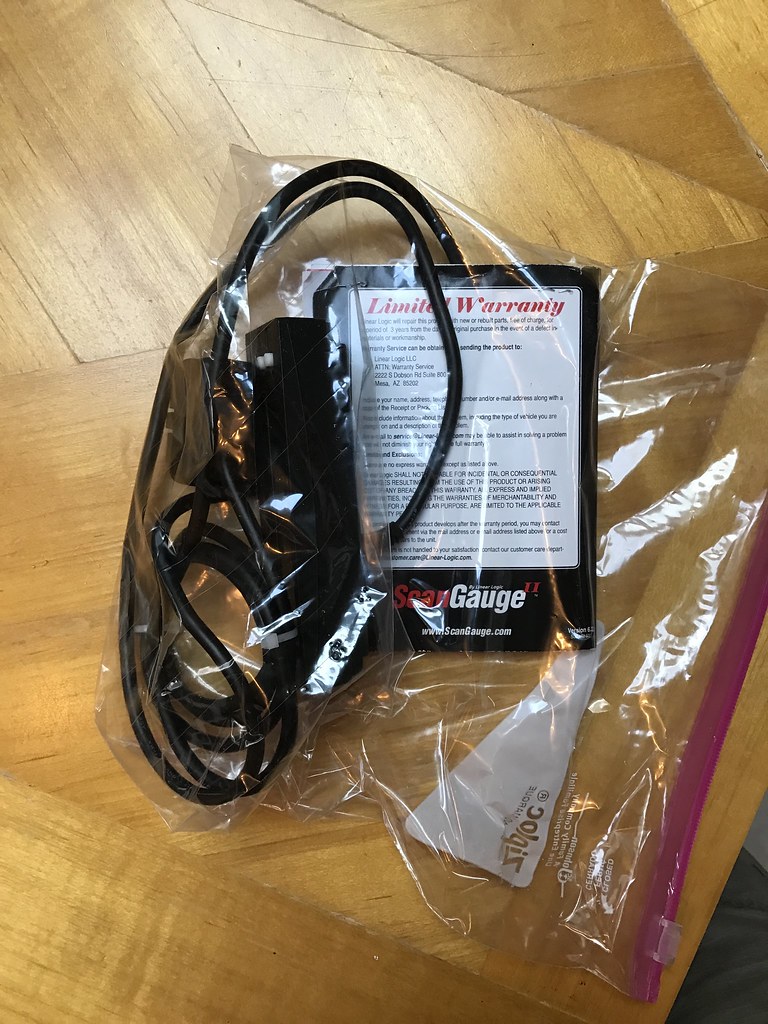 Enter the Scangauge. I picked it up used on eBay for $89 shipped, and it can basically display anything that my van's computer knows. It's like Veritaserum for OBDII ports.
Enter the Scangauge. I picked it up used on eBay for $89 shipped, and it can basically display anything that my van's computer knows. It's like Veritaserum for OBDII ports.
Like any good project, the first step was drilling a hole....
And you're done! Yes, I straightened it out–this photo was taken before I applied the tape.
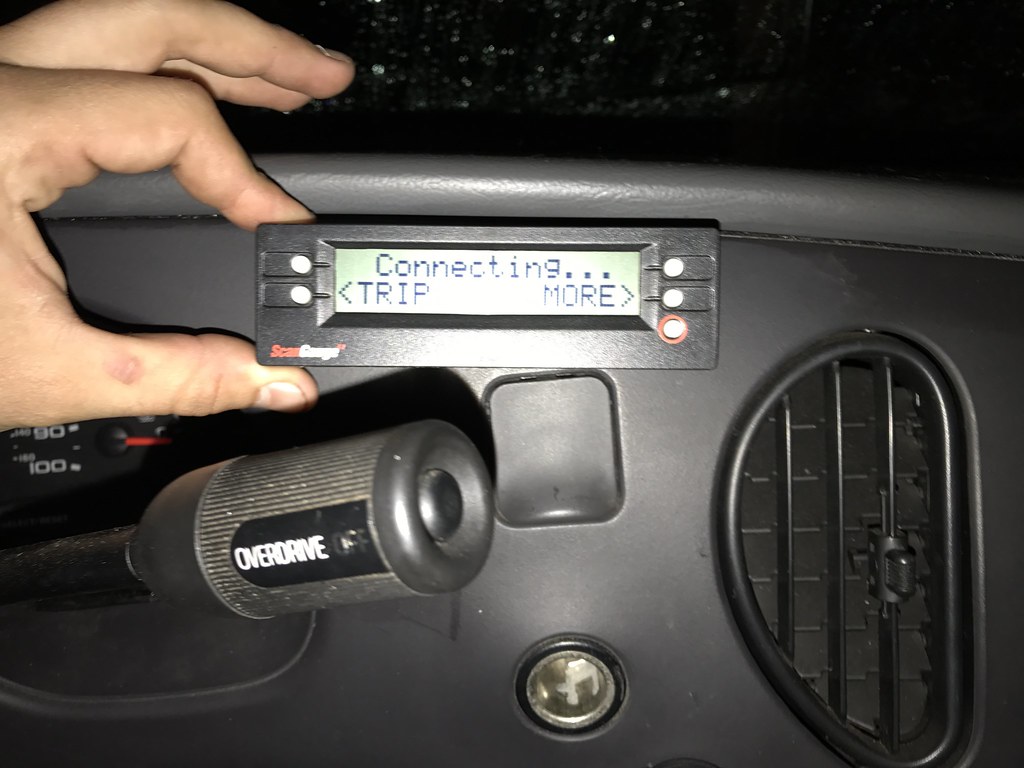
I pulled the knee panel off and zip tied the wires out of the way, so this is all you can see on the other end:
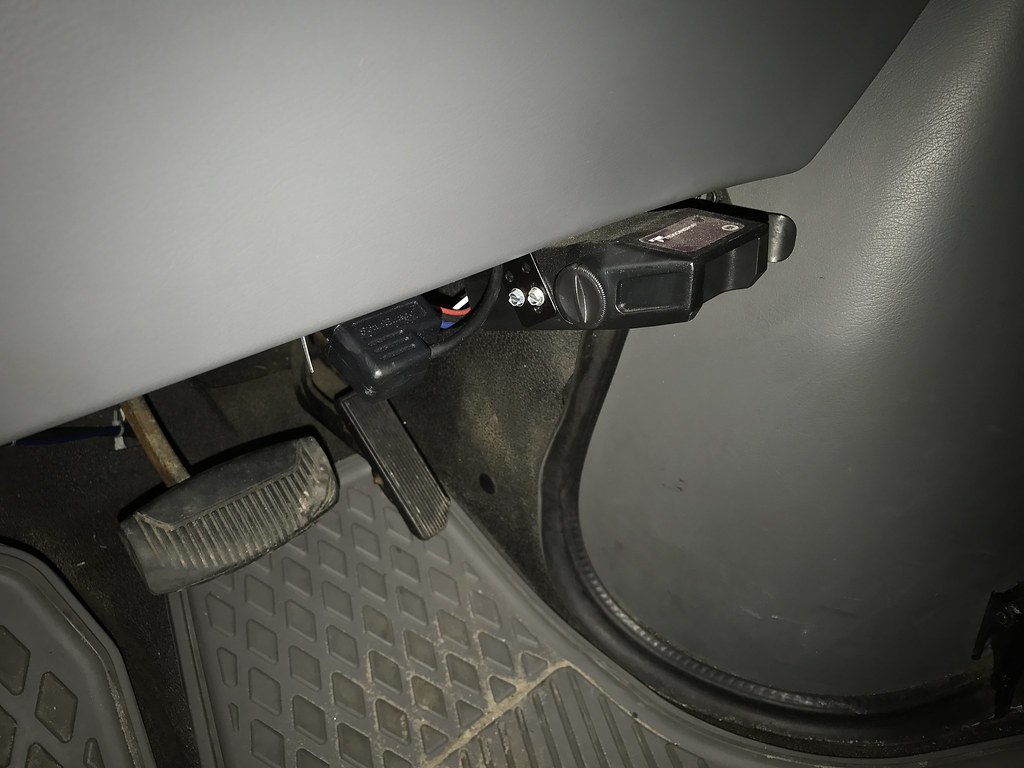
The photos don't show it well, but after a few minutes of tinkering I matched the color and brightness of the van's cluster.
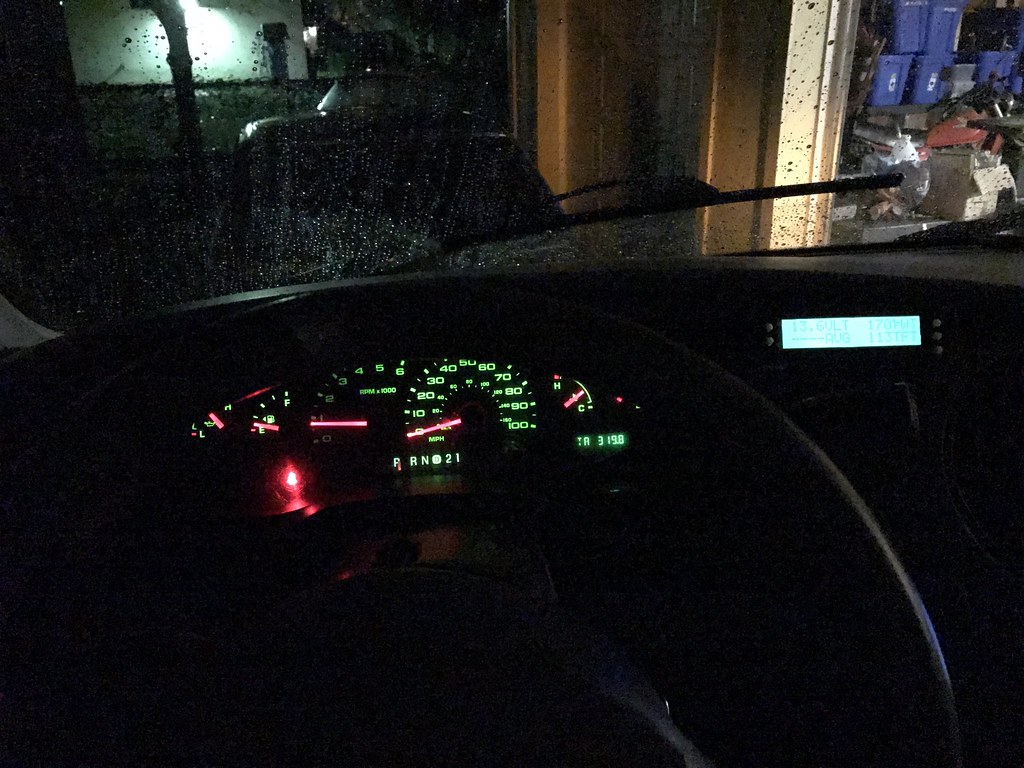
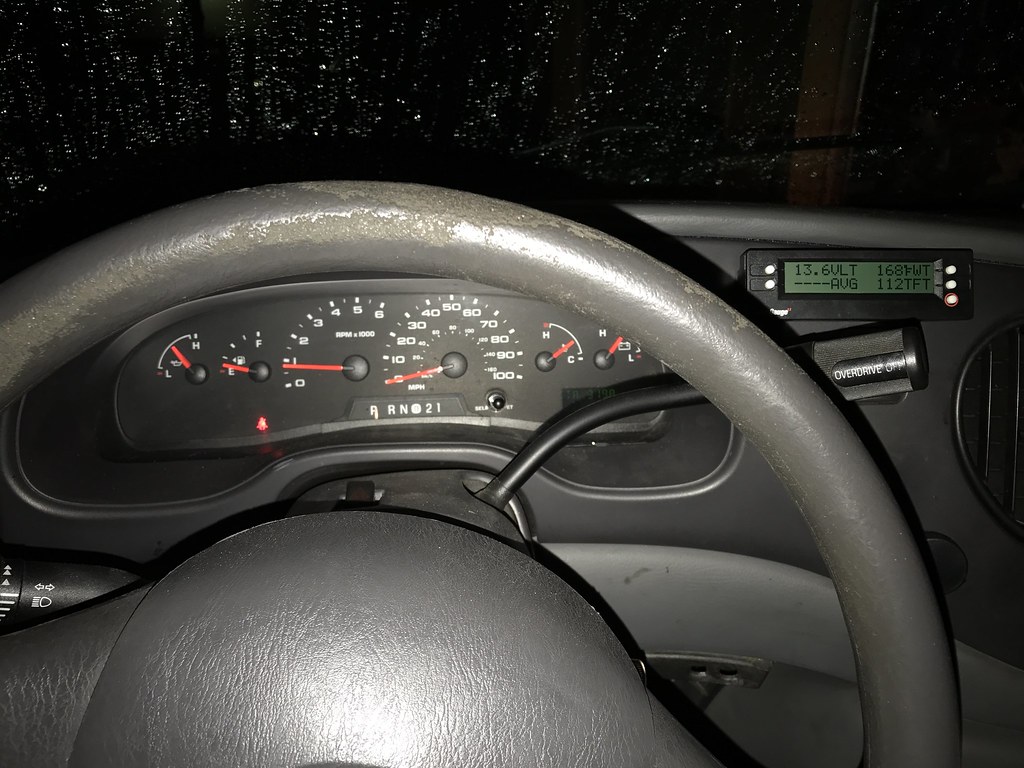
Then, after a few more minutes of tinkering, I programmed it to display what I wanted to know. I chose the ScanGauge II over its competitors because it allows user-programmable X-gauges, which basically means you can add vehicle-specific gauges to it. Its competitors wouldn't have been able to give me the transmission temp, but the ScanGauge can.
Here I've got current gear ratio, coolant temp, trans fluid temp, and torque converter slip ratio displayed. This thing has about a million other gauges it can display, though, so I'm sure I'll keep tinkering and finding new things to display. It can also show a bunch of what I'll call secondary gauges, which are things it calculates based on a few other readings. Now I have a fuel mileage gage and a distance-to-empty reading, for example.
It also confirmed my suspicion about the fuel gauge: it does indeed read low, with full meaning full by 1/8 of a tank really meaning 1/4. That's probably intentional on Ford's part, though.
How do you like the Hella driving lights? Are they worth the extra cost vs cheap Harbour Freight 100 watt models or other cheap ones (for example).
I love them! There's no comparison in my opinion, which is why I put a set on anything I own that drives back and forth to the parents' cabin (lots of deer in the woods). They hold up very, very well, too, which is not something I can say about the HF lights. Do the cheapies throw as much light? Yes, but the pattern usually isn't as good, as the manufacturing tolerances just aren't there. Plus, Hella has been a longtime supporter of GRM, and between making great stuff and supporting the magazine, I would never use anything else.
Tom Suddard wrote: Another day, another project. The pin on the van's 7-way connector that charges the trailer battery has never worked. I know exactly why, too, because I was there when the current brake controller was installed a few years ago: We couldn't find a convenient place to connect the wire. We also knew the van was probably getting traded in soon. Hah! Joke's on future me, past me! Anyway, I sat down with the Ford body builder's handbook, which is never more than a quick google away, and has info on all sorts of neat electrical tricks built into this van's control modules, like stationary elevated idle control to run a power take off. I found something particularly interesting: shove any standard 40A relay into the spare spot in the fuse box (closest to the top of the photo), and the red wire in the bundle that ends on the driver's side of the firewall will magically be powered only when the van's ignition is on and the battery voltage is still high enough to start the vehicle. Plus, it's already fused, too. This is called the trailer battery charge control relay or something like that, and after putting one in and hooking up that red wire, I now have a trailer charging circuit that can never run my battery dead.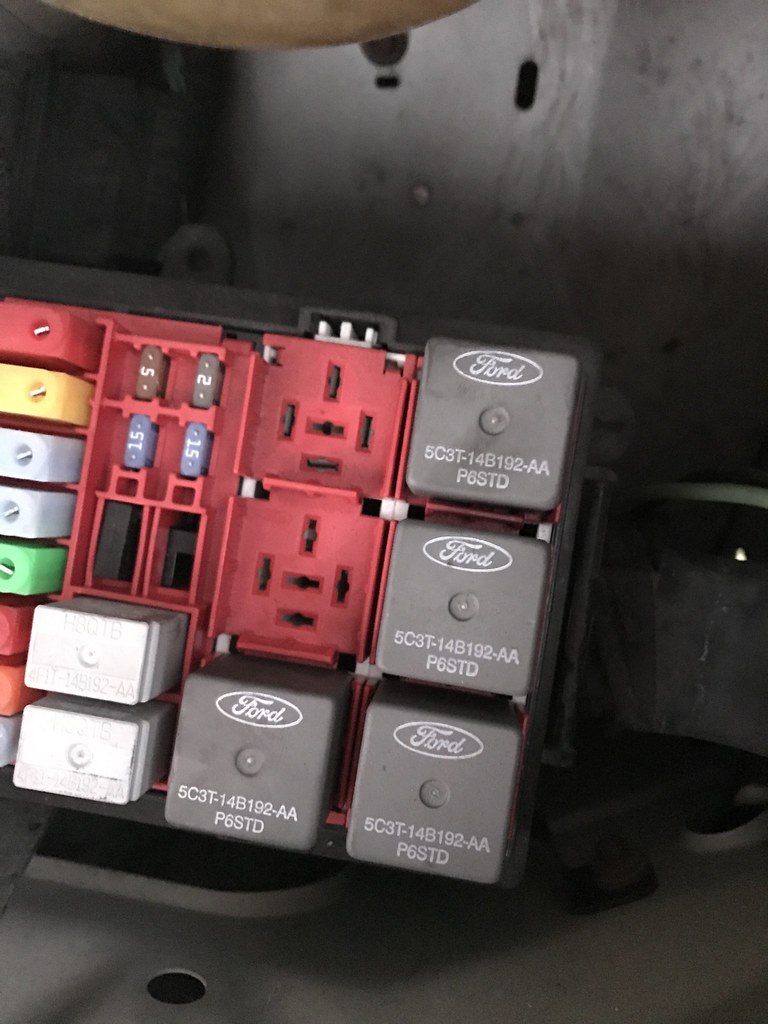
This is why you should always read the instructions. There are lots of other goodies in that handbook, too, so expect more stuff along these lines in the future.
That's brilliant. I would use that for my heated seat power.
How loud is that 3 gallon harbor freight air compressor? The loudness is all over the board based on manufacturer. I've never heard any of the HF compressors running, and need a 3-5 gallon one.
You'll need to log in to post.